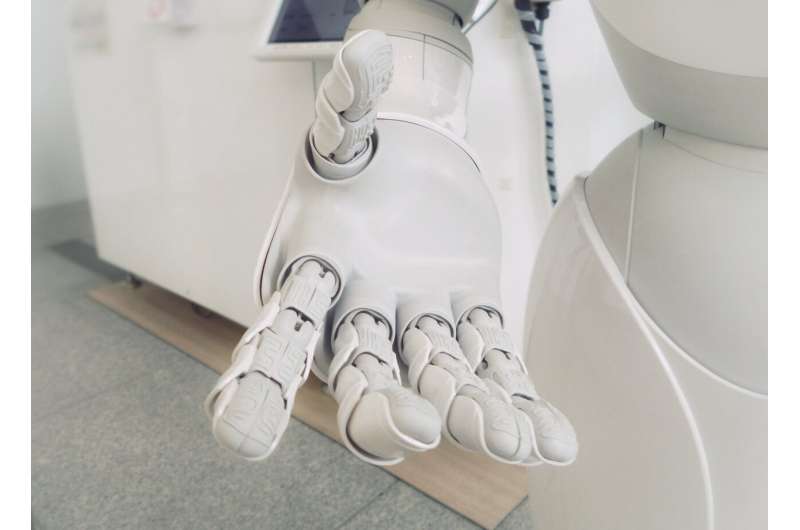This article has been reviewed according to Science X's editorial process and policies. Editors have highlighted the following attributes while ensuring the content's credibility:
fact-checked
peer-reviewed publication
trusted source
proofread
Global metric developed for the design of dexterous robots

A collaborative project by researchers from Kings College London (KCL), University College London (UCL) and Moorfields Eye Hospital has defined the design and application of robots for reachability and dexterity for eye surgery.
"While we already have good algorithms for the reachability of robots that explain how long, stiff or bendy a robot should be to reach specific locations, there has been no work on designing robots for dexterity, in other words for reaching a specific point but under every orientation possible," said Dr. Christos Bergeles.
Researchers Dr. Christos Bergeles, from the School of Biomedical Engineering & Imaging Sciences, Dr. Konrad Leibrandt, formerly at UCL, and Prof Lyndon da Cruz from Moorfields Eye Hospital, have designed an application that defines both reachability and dexterity. They have introduced a global metric that allows for quantitative comparison of continuum robots.
Continuum robots move like an elephant's trunk, can flex, and alter their shape to avoid critical anatomical regions, and can control the position and orientation of their tip to mimic the dexterity of the human hand. These robots can reach the bottom part of the eye where they can transplant retinal cells to replace damaged ones, ultimately improving the dexterity of the surgeon.
"This paper has been many years in the making, and a tremendous effort from Konrad Leibrandt, the first author. I believe it can change the way that continuum robots are evaluated, and I am looking forward to implementing its conclusions in our future work," said Bergeles.
Bergeles is utilizing the methods outlined in this paper to develop micro-surgical robots that offer opportunities beyond conventional surgery. He aims to implement the design algorithms in robotics for eye surgery, under a new collaborative program from KCL, UCL and Moorfield.
"The developed systems will revitalize surgery by improving practice and patient outcomes, supporting the vision of sight restoration, and presenting evidence for the role of new smart instrumentation technologies in the operating room," said Bergeles.
The study is published in the journal IEEE Transactions on Robotics.
More information: Konrad Leibrandt et al, Designing Robots for Reachability and Dexterity: Continuum Surgical Robots as a Pretext Application, IEEE Transactions on Robotics (2023). DOI: 10.1109/TRO.2023.3275381


















